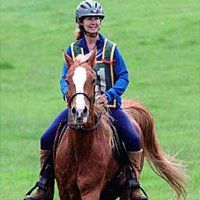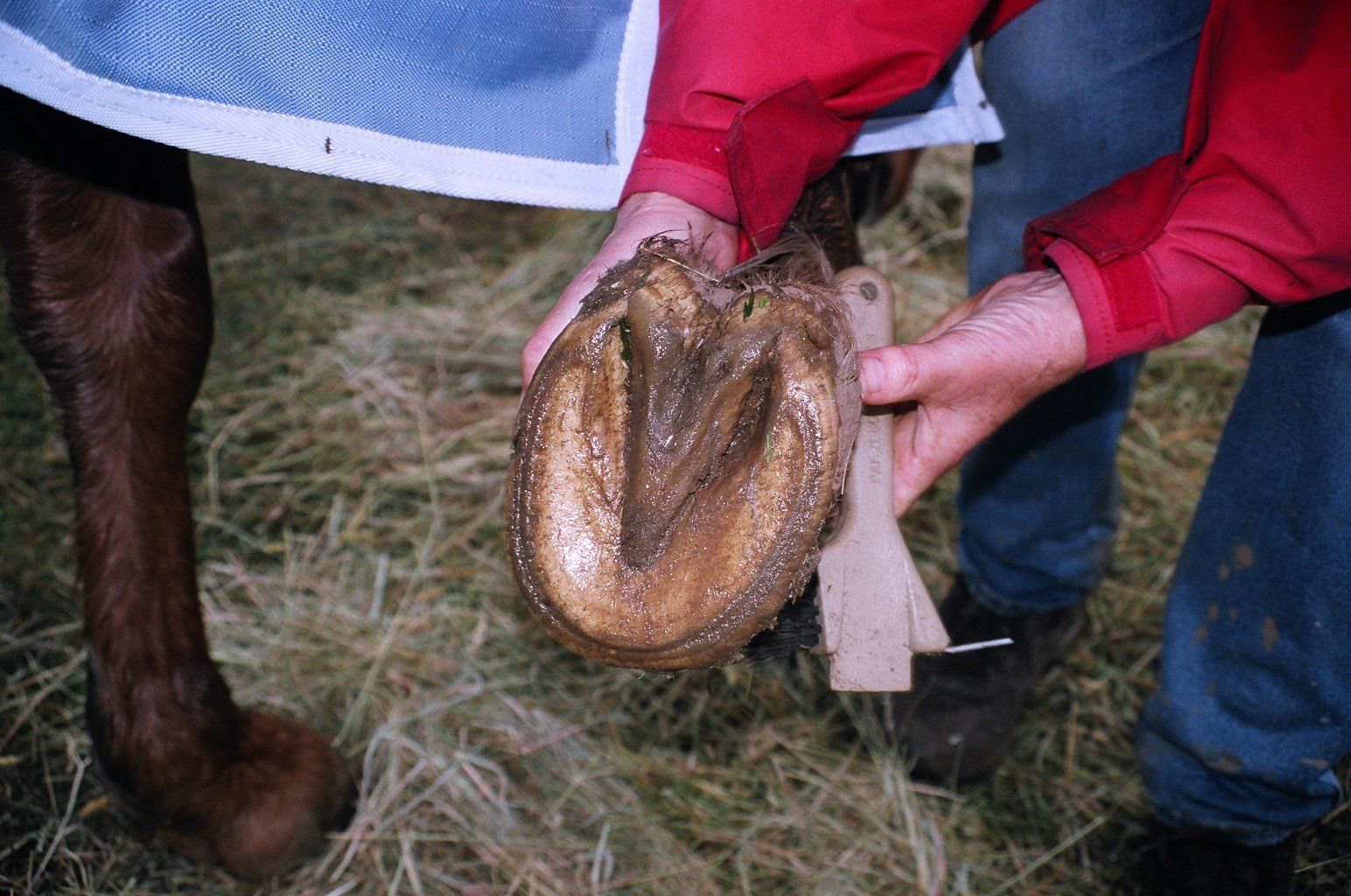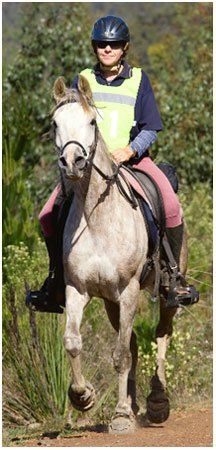BAREFOORT PERFORMANCE :: ENDURANCE
Admin • 26 April 2014
ROCK CRUNCHING HOOVES – ENDURANCE HORSE IMAJ ZAMIR
The sport of endurance is the ultimate test of the bare hoof.
Endurance rider Jen Clingly and her Arabian, Imaj Zamir made Australian history as the first to run 100 mile endurance competition without shoes, her horse Zamir has clocked up close to 3000km. He secured a converted Tom Quilty buckle (Australia’s famous endurance ride – 100 miles ridden in a day). He was also the first horse in Australia to win a ride outright barefoot and secure best conditioned horse and at the 2005 & 2008 Tasmanian State Championships he won the lightweight division in the 90km ride barefoot.
City skyline
Photo By: John Doe
Button
JEN CLINGLY & IMAJ ZAMIR
Not many would believe you could run a horse over long distances without shoes. And it wasn’t without a huge amount of trepidation that Jen decided to run her horses without shoes. Jen says it was the natural ability of her horses and the rehabilitation of her lame horse that laid the foundation of what has become a very passionate and public role for supporting the barefoot movement. Zamir proved to her that metal shoes are not a necessity and his ability gives her the strength in conviction to study this further and challenge any assumption that the hooves are too weak, too sensitive to go unshod.
“I have been trimming horses for barefoot performance for the last 5 years. I spent a lot of time acquiring knowledge about trimming and training horses without shoes. I take the time it takes to train and condition their hooves for riding & then competition. I am in awe of wild horses and their relevance to our domestic horses: our Australian brumbies which I have witnessed in outback Australia cemented my belief that horses don’t need shoes. There is so much to be learned and adopted from the wild horses and their natural lifestyle. Especially their tough lame free hooves.”
Rock crunching hooves can be established and maintained easily by commitment and dedication to training, trimming and lifestyle. Barefoot endurance horses are benefiting from:
City skyline
Photo By: John Doe
Button
SUREFOOTEDNESS
ZAMIR’S HOOF AFTER 110KM
Knowing your horse is safe and surefooted gives you confidence as a rider to ask more in regards to speed over certain terrain. For example the 2005 Tom Quilty endurance event was hair raising because of the atrocious weather that set in and the wet slippery conditions. The ride organizers shortened the event because it got too dangerous at the 110km point. This is the first time in its forty year history that the ride had to be shortened. Jen says “I watched in horror as shod horses slid and scrambled in the mud and came down on top of their riders, it was pure madness. But I felt safe, I was aware of every hoof beat, heel first landing and then expansion, sucking and sticking to the ground, no traction compromised.”
QUALITY OF MOVEMENT
Naturally shaped hooves unencumbered by the weight and concussion of metal shoes allows freedom of movement and natural break over.
STAMINA
Imperative to an endurance horse. Because the hooves act as auxiliary pumps to circulate the blood through the entire body. Therefore barefoot endurance horses are recording lower heart rates and better recovery times. There is no swelling/edema post ride compared to shod horses. Much more documented research is needed in this area but Jen has found from personal experience and comparing results to the shod horse of the same age and breed she trained and competed with.
IMPROVED PERFORMANCE AND LONGER CAREERS
Lameness issues are so common and devastating to many top endurance horses. Would these same horses suffer if they were trimmed and conditioned to go without shoes. In fact lameness accounts for up to 70% of downtime or lost training days in competitive horses and is 90% the direct cause of withdrawal from competition and early retirement.
“BELIEVE ME THAT HORSES CAN TRAVEL FAR AND WELL BAREFOOT. BEST OF ALL HORSES BENEFIT FROM IT.”
Jen was instrumental in getting the Tasmanian Endurance Riders Assoc to support the rule change to allow unshod horses to compete. Prior to 2004 the Australian rules stated you must compete on an “adequately shod horse.” In 2003 she competed all rides in a full set of hoof boots to comply with the rules and then 2004 saw the rule change come into fruition and Zamir was off “RUNNING BARE” as he is nicknamed.
City skyline
Photo By: John Doe
Button
MARG RICHARDSON
Marg Richardson has been involved with horses all her life and breeds and rides Arabians purposely bred for endurance. It was a mare with a club foot in 2005 that started the barefoot journey for Marg after deciding the options for the natural trim was the surest way to succeed with her. She remained totally sound and completed two 40km training rides barefoot without a hitch. Marg completed the 2006 endurance year with two other horses without shoes, finishing off with a win and Best Conditioned at the State Championships 93km ride with her home bred horse Mahtob in 4 Easyboot Bares.
The barefoot movement has enveloped Marg’s life like so many others and she now trims for approx 60 clients and their horses as well as her “daytime” job of Quality Assurance facilitator. She started the Yahoo group barefoot horse in australia when she found there were no equivalent Australian sites and was trying to find some local information and this now has over 300 members – such is the momentum in Australia.
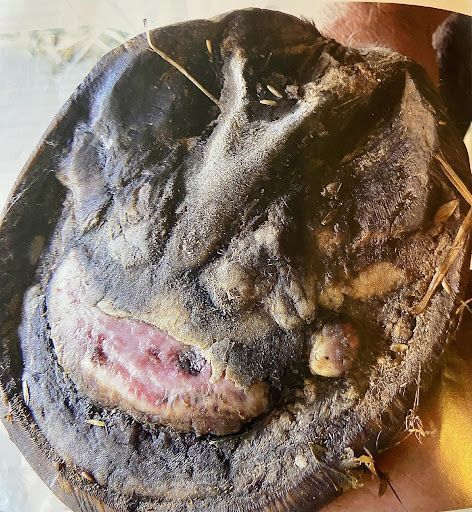
Laminitis kills thousands of horses every year, and leaves thousands of others debilitated with lameness. It will and can affect any horse. And for you, the horse owner it can be devastating: you feel guilty and heartbroken at your horses suffering, confused with all the information as it is typically explained by professionals in scientific terms that can be difficult to understand, costly veterinary bills and you have the major task of nursing your horse back to recovery. . Unseasonal weather patterns around Australia with abundant rain and sunshine saw laminitis at a near epidemic last year. The reason being, that the environmental conditions can trigger increases in the sugar, starch and fructan. These collectively known as non-structural carbohydrates can cause laminitis in any horse or pony. Alarm bells ring this spring!! Be warned and be prepared, for prevention is better than cure.
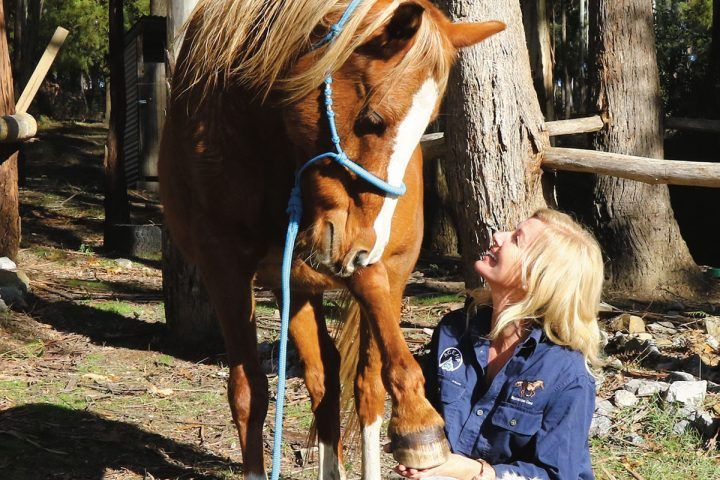
The extraordinary relationship between humans and the horse has been running since before the birth of Christ. Indeed, there is evidence our domestication of horses goes as far back as 3500 BC. And ever since we recognised the utilitarian value of the horse, there has been the horseshoe. The use of horseshoes has become an almost unquestioned tradition. Humans have been nailing shoes onto horses’ hooves for well over a thousand years. Who can remember back to a time otherwise?

